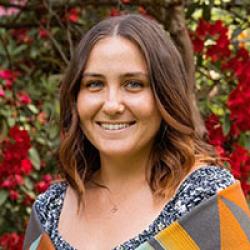
Growing up, I knew I wanted a career that would let me help people every single day. But like so many other Native kids in this country, I never met a Native American physician, and I certainly didn't think I would become one.
I didn’t even consider medicine until I started college at the University of Oregon and met students who talked about becoming doctors. From then on, I was determined. I served as a teaching assistant and worked in a clinical research laboratory. I dove into my applications with little help — just me and my mom in my bedroom trying our best. I studied hard for the MCAT® exam, and I did OK but not great. Ultimately, I got one interview and, on the last day of the application cycle, was rejected.
I am not alone in my difficulties. Between 1996 and 2018, 2,813 American Indian/Alaska Native (AIAN) medical school applicants were rejected and never reapplied. What's more, the proportion of AIAN people entering medical school dropped from 0.4% to 0.2% between 2006 and 2017. That’s a terrible loss since AIAN providers are more likely to work in tribal areas and other underserved communities.
I never met a Native American physician, and I certainly didn't think I would become one.
Although medical schools have been increasingly focused on diversity, much more work is necessary. We have a duty to provide the many talented AIAN applicants the opportunities they need to gain admission to the halls of medicine. I know this because I wouldn’t be about to matriculate into Oregon Health & Science University (OHSU) School of Medicine without the Wy’east Pathway, a 10-month program designed to support AIAN medical school applicants.
Lacking Native physician mentors, I felt even more adrift after my medical school rejection than ever before. But then I recalled that the Northwest Native American Center of Excellence (NNACoE) at OHSU, which offers supports for Native students, had contacted me back in college. I reached out to them and learned about the Wy’east Postbaccalaureate Pathway.
Before the NNACoE, I'd never heard of postbaccalaureate pathways for medicine — programs that help candidates strengthen their applications to medical school and build the skills necessary to succeed once there — let alone one for Native students. But I applied, and when I gained entry to the program’s third cohort this past fall, I felt like Charlie winning a ticket to Willy Wonka’s chocolate factory. My ticket was even better, though, because if I met certain requirements during the program, I would automatically be admitted to OHSU's medical school. (Other candidates chose to apply for conditional acceptance to Washington State University Elson S. Floyd College of Medicine, and this coming year, the University of California, Davis, School of Medicine will be an additional option.)
Wy’east — the traditional name for Oregon’s Mount Hood — is an intensive pathway for AIAN students who unsuccessfully applied to medical school, have an MCAT score below a certain cutoff, or lack clinical experience. The program, which meets four days a week in Portland, provides biomedical and MCAT classes as well as cultural supports and skills-building to promote success in medical school.
I certainly benefited from the pathway’s academic offerings — a foundational science course, one on population health, and other crucial classes — as well as the research projects that exposed me to various fields. I appreciated that the program provided training in study skills and that faculty and staff met regularly with all the participants to ensure that we were on track. In addition, outside mentors were tremendously helpful, including former Wy’east scholars who shared their medical school experiences and Native American residents who served as a source of inspiration.
The bonds I formed made me feel like I could take on any challenge medical school offers, but above all, it made me proud to be Indigenous.
But the program’s focus on Native culture was just as important to me.
Threaded throughout the pathway are cultural activities such as hikes to connect with the land, planting and harvesting in an Indigenous food garden, and a weekly Native-centered virtual book club. Prior to COVID-19, participants joined in powwows and other local Native cultural events. We scholars — who come from all over the country — learned about each other’s diverse tribes and cultures, sharing centuries-old wisdom and ways to weave it into our medical careers.
These experiences were crucial because as Native students climb the ladder of academia and absorb the surrounding culture, we often lose some of our Indigenous identity.
Personally, although I am an enrolled member of the Citizen Potawatomi Nation and my culture was ingrained in my home life, I grew up off my tribal reservation and knew no other Indigenous people other than relatives. In college, I started to suppress aspects of my Native identity to better fit in with the people around me.
Through the pathway, though, I had the opportunity to connect with my cultural identity and a community of people who take pride in their tribal backgrounds. We spent many hours talking about our tribes’ histories, values, and ceremonies. The bonds I formed made me feel like I could take on any challenge medical school offers, but above all, it made me proud to be Indigenous.
The program clearly resonates for others as well. So far, 30 scholars have successfully completed the program and 25 have earned acceptance to medical school.
Today, thanks to the Wy’east Pathway, I am well on my way to becoming the best Native physician I can be to give back to the community of strong, bright, and resilient people who made me who I am today.
